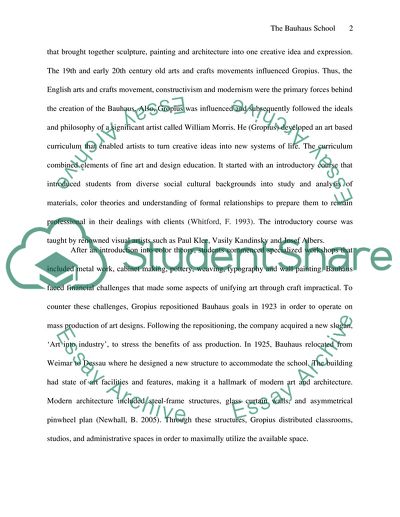Cite this document
(“Bauhaus School Essay Example | Topics and Well Written Essays - 1000 words”, n.d.)
Bauhaus School Essay Example | Topics and Well Written Essays - 1000 words. Retrieved from https://studentshare.org/visual-arts-film-studies/1699116-bauhaus-school
Bauhaus School Essay Example | Topics and Well Written Essays - 1000 words. Retrieved from https://studentshare.org/visual-arts-film-studies/1699116-bauhaus-school
(Bauhaus School Essay Example | Topics and Well Written Essays - 1000 Words)
Bauhaus School Essay Example | Topics and Well Written Essays - 1000 Words. https://studentshare.org/visual-arts-film-studies/1699116-bauhaus-school.
Bauhaus School Essay Example | Topics and Well Written Essays - 1000 Words. https://studentshare.org/visual-arts-film-studies/1699116-bauhaus-school.
“Bauhaus School Essay Example | Topics and Well Written Essays - 1000 Words”, n.d. https://studentshare.org/visual-arts-film-studies/1699116-bauhaus-school.


